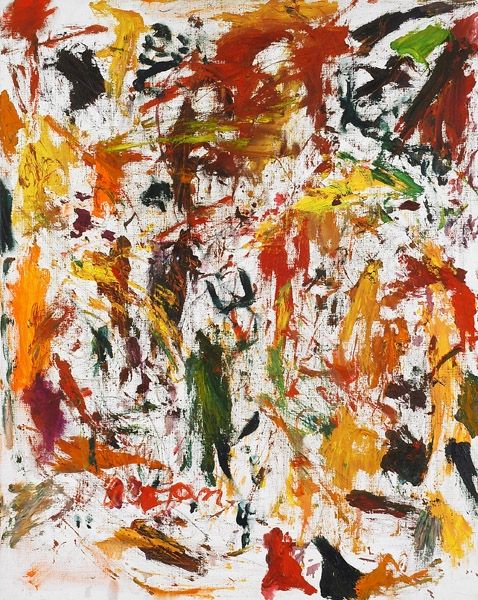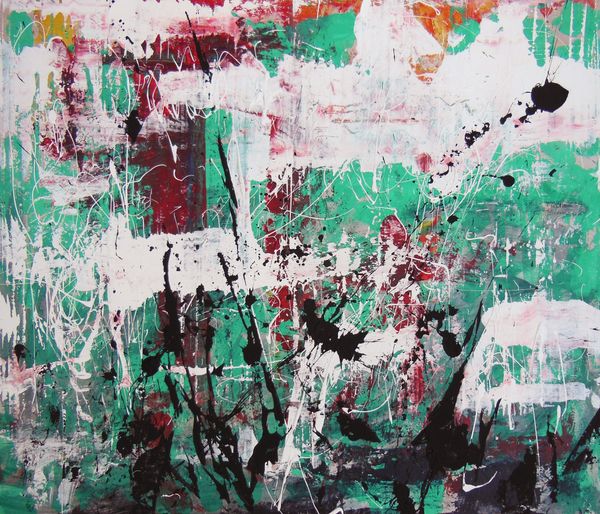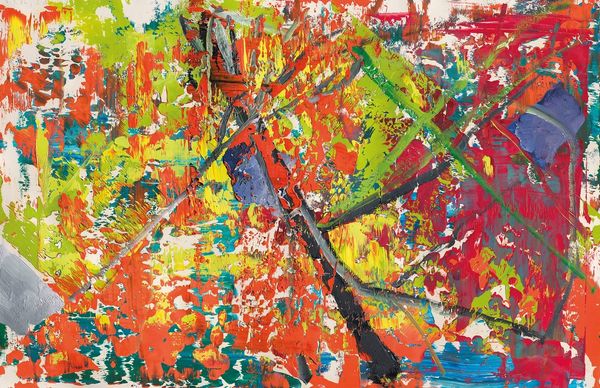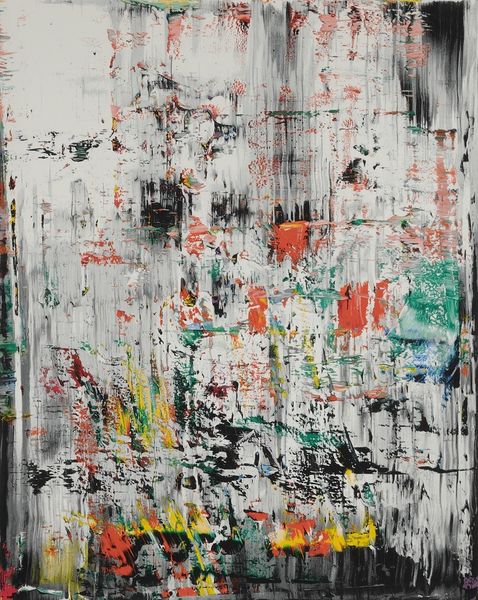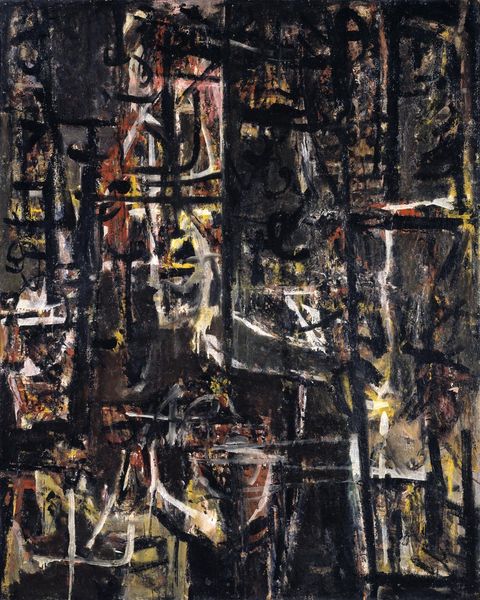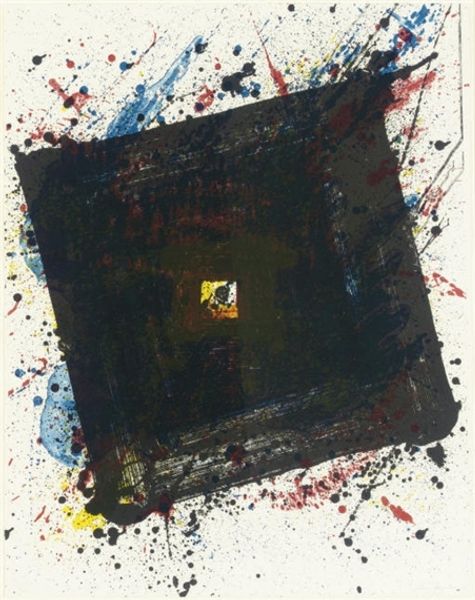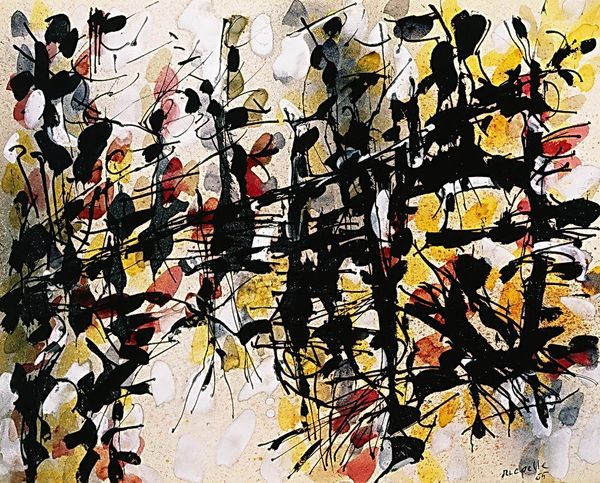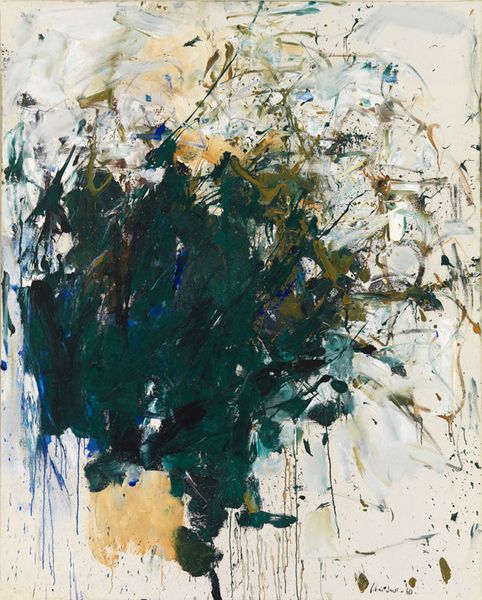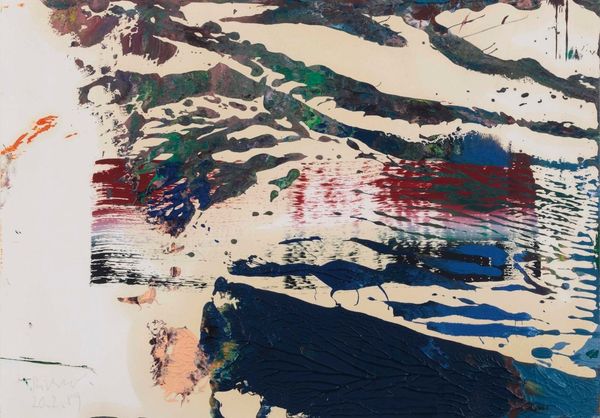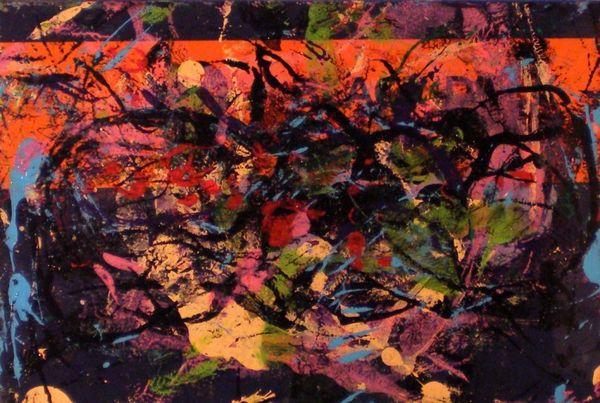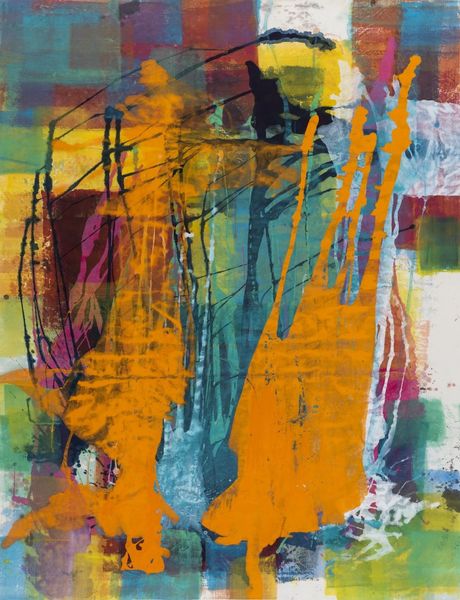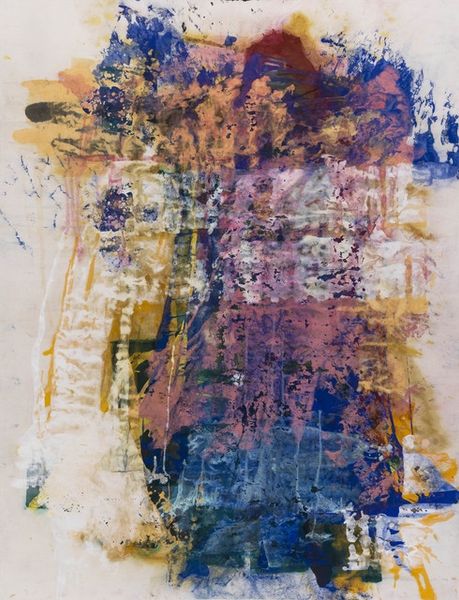
painting, acrylic-paint
#
abstract-expressionism
#
abstract expressionism
#
painting
#
acrylic-paint
#
form
#
abstraction
#
abstract art
Copyright: Jean-Paul Riopelle,Fair Use
Editor: This is *Triptyque orange* by Jean-Paul Riopelle, made with acrylic paint. It certainly evokes a feeling of dynamic energy. What historical currents were influencing his abstract expressionism here? Curator: Abstract expressionism, born from the aftermath of World War II, represents a powerful shift in the art world, with New York superseding Paris as the central artistic hub. Artists, influenced by surrealism and grappling with anxieties related to the human condition, embraced abstraction to express profound emotions. Consider the social and political environment that shaped such expressive art. Can you see that translated onto the canvas? Editor: Yes, the intense brushstrokes and chaotic composition almost feel like a response to turmoil. So, in the context of post-war society, what was the role of an artwork like this? Curator: Its role evolved within galleries and museums to embody both individual and collective sentiments. These large-scale pieces offered an alternative to traditional figurative art by focusing on universal human experiences. Was Riopelle aiming to provoke, or was it to engage in a broader artistic discourse? Editor: I see, so the political context really pushes its meaning beyond just formal aesthetics. That definitely enriches my understanding. Curator: Precisely. Considering these contexts helps us understand art's ongoing dialogue within society and history. Editor: Absolutely, I will carry this forward to my studies. Thanks so much!
Comments
No comments
Be the first to comment and join the conversation on the ultimate creative platform.
